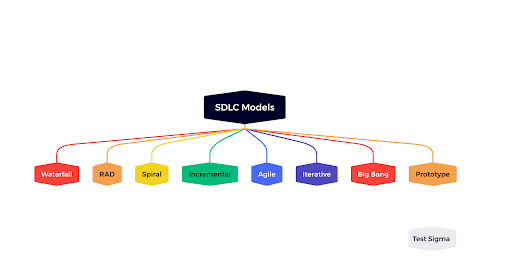
All developers and businesses want users to use their apps. Mobile apps are not only costly and time-consuming to develop, but they’re created to be used by real people to resolve real problems, so when app downloads are low it’s disappointing.
Engagement, maintenance, and growth rates are essential to showing the value of an app and measuring its profit on investment. But one metric is more valuable than all of them is user satisfaction.
If your users are happy, they’re more expected to engage, spend more, and advertised the word about your app to their friends and family or post about their app experience online.
And considering 84% of people believe online reviews as much as an individual recommendation, it is important that you keep users and customers on your side.
If users aren’t satisfied with your app, they’re not going to drop you an email to complain – they’re likely to share their adverse experience with their family, or worse, talk about their experience on social media.
Developing a successful app has many more advantages than earning five-star reviews or random purchases from your e-commerce store.
Happy users are more likely to do business with you again if they have a positive experience, and according to a research that loyal customers are worth up to ten times their primary purchase value, so they could become a long-term customer if they’re happy.
Here are some of the ways you can ensure your app keeps all of your users happy…
Data Rely
One of the simplest methods to get a feel for user comfort is to analyze your data. Analyze where users are getting your app, how long they’re engaging with your content when they download it, and where your current drop-off points are.
If users aren’t going past your sign-up page, then the possibilities are that you’re disappointed to give an enjoyable onboarding, and you may require to go back to the drawing board and review your user experience.
However, data can only go so far in painting the picture of user satisfaction. You should not significantly assume that a customer is unhappy with your app because they’ve only started it once – they might’ve been distracted and require a reminder that you’re there to help them to engage with you. Keep an open mind and let users not numbers do the talking.
Conduct Surveys
The best method to measure user satisfaction and get the thumbs up on new highlights is to conduct a small survey within your app. Be careful – “are you pleased with our app?” doesn’t give you anything to work on, but “what do you think about our new shopping feature?” does.
Rather than attacking users with a survey when they open the app, make it opt-in or ask questions via a pop-up every time they finish a session.
It will take time to establish your feedback, but growing smaller pieces over time will result in higher engagement rates than expecting every user to complete a three-page in-depth survey about their experience.
Keep your questions small and only ask questions that mean something to your business. If you’re not thinking about developing an augmented reality feature, for example, don’t hang the carrot and ask users if they’d like to see an AR tool.
Doing so will raise expectations and boost users to shop around for other apps rather than staying faithful to your brand.
As always when collecting user feedback, tailor your questions to your various audiences and isolate targets to maximize engagement and useful responses – a one-size-fits-all survey won’t work and feedback won’t be as useful.
A segment to get the most out of your survey.
Incentivize
If users aren’t engaging with your survey but they’re consuming time in your app, push them in the right direction by offering incentives such as a free trial of your premium service or a discount code off their next shop.
We all get frustrated when apps attack us with offers to leave a review or submit feedback, so when a freebie is offered, users generally feel more confident about providing feedback and will offer more useful, actionable points than if they were giving comments off their own back.
If you’re attempting to flesh out your app and build new features and functionality, you could even ask users to present their ideas and offer the winner a prize and their name in your app’s credits as a thank you.
Once you’ve collected feedback and understand what bothers users have about your app, the next step is to achieve those changes to increase user satisfaction.
Simple Things
Users downloaded your app for a purpose, whether it was to buy a dress from your store or order a takeaway after a busy day at work.
Simplify your app and don’t try to reinvent the wheel – help users reach your tools as soon as they can, and they’ll be more satisfied as a result.
Onboarding is key here – don’t have users fill out a thousand form fields before they can get started; keep it simple and restrict the conflict between your app and their requirements.
Common friction points like logging in, creating an account, leaving a review or joining with friends can all come later – let users complete their initial task before doing anything else.
Always Present for users
User satisfaction is about much more than giving a cutting-edge app with interesting features; it’s about giving customers that you’re there for them.
Make your team is as easily available as possible through phone support, live chat, social media or an in-app ticketing system and create a knowledge base with video tutorials to help when your team isn’t available.
If a user can’t find what they want within your app and there’s nobody to talk to, you’re presenting them a poor user experience and they’re unlikely to stick around for long.
Reply to every comment and query, even if it’s been answered before.
Some brands will automatically redirect users to a knowledge base or help center, but giving a personal reply on social media or a forum shows that you genuinely worry about your users and their involvement within your app, and they’ll usually become more engaged as a result.
Make sure you’re on the peak of your App Store and Google Play Store reviews, too, responding to both positive and negative feedback.
Thank users for their time and tell them that you’ll address their interests and comments – if you’re prompt and offer solutions that make users happy, then in-app satisfaction will normally climb and help you create a chart-topping app.
Always optimize and improve
Finally, a quick word on maintenance. Businesses simply want to keep their investment to a minimum after spending in an app, but the fact is that an app is a continuing commitment.
If you launch an app in January then it’s almost surely going to require tweaking and updating by April. Operating system updates and viruses need to be addressed to assure you’re delivering good user experience and that your app loads fast and perform consistently.
Conclusion
Whether you’re optimizing your website for SEO, doing a pay-per-click campaign or building an app, it’s easy to turn to data and analytics to decide whether you’re on the right path.
Whilst data is necessary, user satisfaction and happiness should be your focus preference – because that’s what encourages you to create sales and keeps your business floating.



